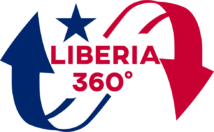
What exactly is the education system in Monrovia, Liberia like?
Liberia Education System Structure
Education in Liberia runs on a 6-3-3 system, with the system heavily damaged by the civil wars and the Ebola outbreaks. From the ages of 6 to 16 education is in theory considered compulsive; however, only about 47% made it to the final primary school year according to statistics collected in 2021. Christian missions and organizations run the greater part of primary schools in the nation.
The West African Examinations Council coordinates the Liberia Primary School Certificate Examination, the Liberian Junior High School Certificate Examination, the Liberian Senior High School Certificate Examination, and the West African Senior School Certificate Examination. Higher education than this is not government centralized.
- Runs on a 6-3-3 system,
- Damaged by the civil wars
- West African Examinations Council Certificate
Liberia Education System includes both Public and International Schools
While attendance at government-run schools is free, there is an overall lack of resources for state-funded schools, so the learning facilities tend towards the inadequate, and those who can afford it tend to opt for private education, a luxury out of reach for the many families in the country in often abject poverty. Unskilled, untrained, and ‘absentee’ teachers abound.
Class sizes are in the hundreds and there is no nation-level quality standard for education developed.
Demographics
Age
Due to widespread late enrollment, the majority of Liberian students are overage, and thus at high risk of dropping out. Poverty combined with an absence of enforcement of school ages are major reasons for this, as well as lack of access to educational institutions; otherwise, it is generally a lack of interest in school by children or parents due to social and cultural factors that is the reason.
Gender
Women in Liberia have less access to education. Sample statistics from a study showed around half the number of women as men attending school overall, with the figure one fifth that of men in the rural sample. The study itself attributes this to legal and cultural barriers, poor investment in female education, and poor access for women to services.
Around 35% of the students enrolled in a Bachelor’s program and less than 20% of students in a master’s program in the two largest universities in Liberia, the University of Liberia and Cuttington University, are female.
Rich and Poor
Socio-economic status limits access to post-school education, with students from the wealthiest families constituting 57% of enrollment and the poorest constituting 0.6%. Most students are ill-prepared for the challenges they face in university, although many universities recognize this, therefore offering remedial programs to help students that are not at university standard to catch up.
Few members of staff hold advanced degrees and staff shortages combined with an increasing part-time faculty make teaching difficult.

Sexual Harassment in Schools
The rise of transactional sex in post-war Liberia, in the eyes of the young viewed as due to the recent conflict, is prevalent; this dynamic is widely encouraged by parents who urge transactional sex with affluent men, even if they do advise discretion. In a school environment, the setup is normally that of an adolescent female engaging in sex with a male teacher for required grades.
The dynamic is generally abusive; for example, they are essentially powerless to determine factors such as the use of a condom during sex. Wider sexual harassment for school-age children is also a pressing issue, with 23% of sexually harassed children reporting harassment from a peer.
Literacy Rate
The recorded literacy rate of Liberia was in 2017 at 48.3%, showing a little over 5% increase from 2007. This however is only for adults who are able to read and write a brief written statement relating to their life. The literacy rate recorded for youth was higher, but still very low.
Scholarships
Scholarships are available for Liberian students to many international universities, an example being the Chevening scholarship in the UK. Within Liberia, the Liberian Scholarship Fund offers opportunities to a select number of underprivileged Liberian students.
Opportunities like this, however, are generally scant.
Conclusion
Overall, therefore, it can be seen that while Liberian education has made real and discernible progress since the end of the civil war, it still has a way to go in terms of educational progress: in creating a safe, adequate environment, in providing trained teachers and in determining educational policy.
Interested in traveling to Monrovia, Liberia?
click here for a comprehensive travel guide
